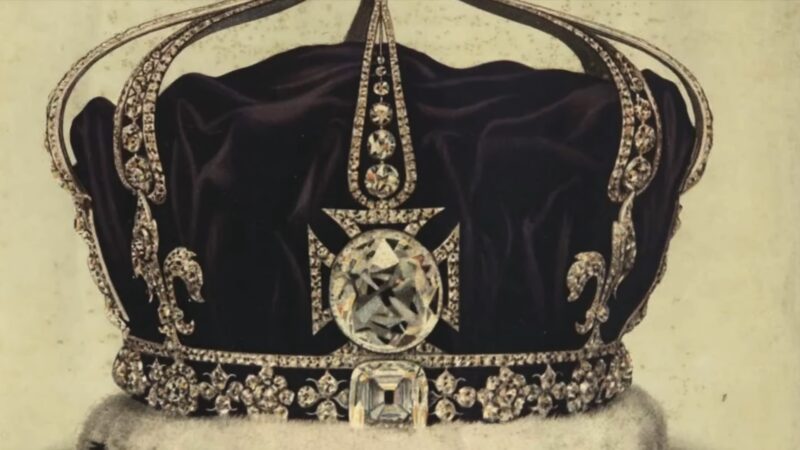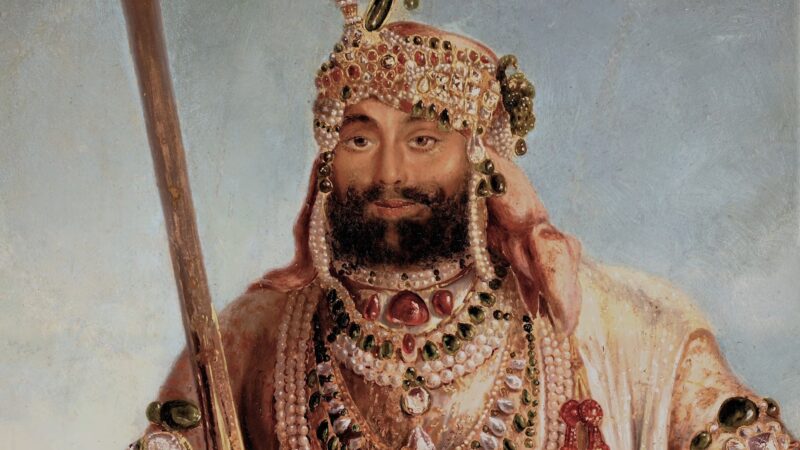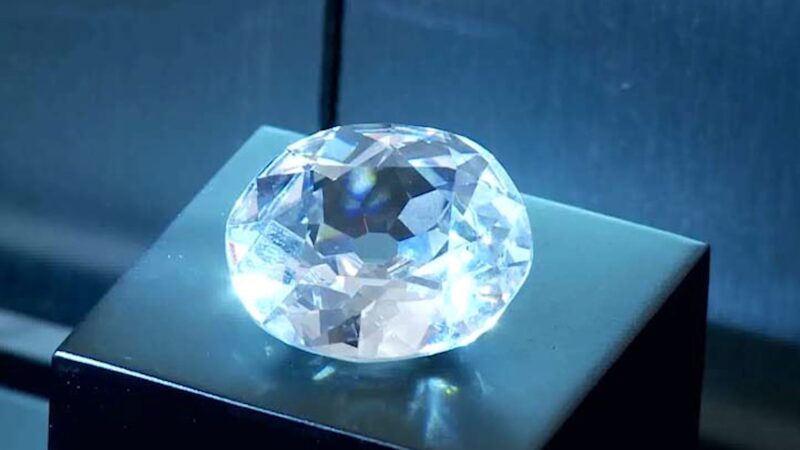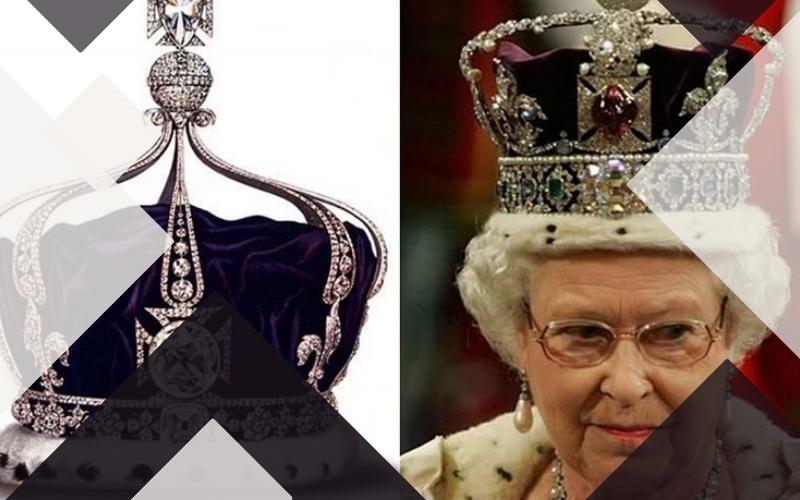When India was governed by the British Empire in 1854, the Governor General at the time, Lord Dalhousie, sent a 15-year-old Punjabi boy to England. Lord Dalhousie thought the mother of this kid posed a threat and was unreliable. It was critical to separate him from his mother for this reason.
In England, this boy converts to Christianity and becomes great friends with Queen Victoria’s son, Edward VII. The British Crown was given custody of this youngster, who also received a £50,000 stipend per year. This child was no ordinary boy; he was Prince Duleep Singh.
Also referred to as Maharaja Duleep Singh. The final emperor of the Indian Sikh Empire. It’s interesting to note that Lord Dalhousie had asked Duleep, then 11 years old, to give Queen Victoria a diamond four years earlier, in 1849, when the British beat the Sikhs in battle.
This diamond was the Kohinoor. It traveled 6,700 kilometers aboard a ship that year to get to London. “He who owns this diamond will own the world; But will also know all its misfortunes.” according to a tale associated with the Kohinoor diamond.
The rumor is referred to as the Koh-i-Noor Curse. Because everyone who owned Koh-i-Noor had lived lives filled with bloodshed, violence, and betrayals. This is the most infamous diamond in history. Let’s dive into the interesting story of Koh-i-Noor.
The Origins of the Koh-i-Noor

Despite repeated requests to have the Kohinoor Diamond returned from Britain, it has long been preserved in the Jewel House of the Tower of London. During the British era, the Kohinoor diamond was transported from India to Britain. It turned into the queen’s crown’s jewel.
Regarding this, there are numerous widely held theories. relating to Kohinoor’s origins. Where was it found, exactly? Theo Metcalfe, a civil servant for the East India Company, noted in his report that this diamond was supposedly mined during Lord Krishna’s lifetime. However, historians generally agree that this diamond was discovered in the Kollur Mines, which are located in the Golconda district of the state of Andhra Pradesh.
On the Krishna River’s banks in coastal Andhra Pradesh, the Golconda diamonds are discovered. Up until the discovery of diamond mines in Brazil in 1725, this region was the only place in the globe where diamonds could be found during the 18th century.
The discovery of the Kohinoor diamond is unknown, however, typically, diamonds are found in the riverbeds of dried-up rivers. We don’t even know when it was discovered historically. According to historians’ best guesses, it was found sometime between 1100 and 1300. It is thought that a Hindu text from 1306 included Kohinoor’s first recorded mention.
The Diamond’s Fateful Journey
The issue is that nobody is aware of the text’s title. No one is aware of who authored it either. The name Kohinoor was first mentioned in writing around 1526. Zahirudin Babur, the first Mughal emperor, arrived in India in 1526. He claimed at Baburnama that a diamond is worth half of what people spend on a daily basis worldwide. It is thought that he received the Kohinoor diamond as a reward for triumphing in a certain conflict.
Shah Jahan mentioned Kohinoor a second time in 1628. when he ordered the renowned Peacock Throne. The construction of this throne took seven years. Additionally, it cost four times as much as the Taj Mahal. The creation of this throne required the use of numerous precious stones and diamonds.
The Red Timur Ruby and the Kohinoor diamond, however, were the two most valuable stones. A fascinating fact is that the Kohinoor wasn’t the most valuable gem the Mughals held. The most valuable stone for the Mughals was the Timur Ruby because they preferred it. Because the Mughals favored stones with vivid colors.
The kings of the Hindu and Sikh religions, however, favored diamonds. Nevertheless, the Kohinoor was granted a high position on the Peacock Throne by being made the Peacock’s eye. Kohinoor was not yet the name given to the diamond.
The Sikh Empire and Kohinoor’s Legacy

A century later, under the Mughals, Delhi had grown to be one of the richest cities in the world, home to more than 2 million people—more than the populations of London and Paris put together. But the Mughal Empire had already begun to decline by this moment.
Nadir Shah of Persia was drawn to Delhi by its wealth. Nadir Shah entered Delhi in 1739 and overthrew Mohammed Shah. The 15th Mughal emperor and Aurangzeb’s great-grandson was Mohammed Shah. Nadir Shah brought back too many riches from Delhi.
To transport the valuables, 12,000 horses, 4,000 camels, and 700 elephants were required. The Kohinoor diamond was one of these gems as well. According to popular belief, Nadir Shah obtained information from a Mughal Empire officer that Mohammed Shah had hidden the Kohinoor diamond in his turban. When the Kohinoor diamond fell to the ground, Nadir Shah proposed to Mohammed Shah to trade turbans as part of an ancient battle custom.
Nadir Shah uttered Koh-i-Nur as a result of how brilliant it seemed in the light. Its actual meaning was “Mountain of Light.” This is how the diamond got its name. However, Tarikhi ‘Alamarayi Nadiri was a book written at the time by Nadir Shah’s finance representative.
The book’s information gave us a written record that the Peacock Throne’s head was where the Kohinoor was placed. Nadir Shah traveled with the Peacock Throne and wore the Kohinoor diamond and Timur Ruby as part of his wristband. The name of this diamond’s origin tale could not be accurate.
Nadir Shah had given this diamond the name Kohinoor, despite the fact that part of it was concealed by a turban. Because the diamond is referred to as Kohinoor in this text. The region of Kohinoor remained a part of modern-day Afghanistan for the following 70 years. This is when the Kohinoor Curse enters the picture.
The British Monarchy and the Koh-i-Noor

The possessor of the diamond will own the entire planet, but he will also be the recipient of all the bad luck.” This saying, which was taken from a Hindu scripture that was penned in 1306, is said to be the Kohinoor diamond’s earliest known mention. Although it is a superstition, you’ll realize that it holds some truth.
Nadir Shah experienced misfortune in 1747 when Nadir Shah’s guard assassinated him. As a result, his empire fell. A soldier in Nadir Shah’s army, Ahmad Shah Durrani was also known as Ahmad Khan Abdali. He established the brand-new Afghan empire.
He became the Kohinoor diamond’s new owner with it. The grandson of Nadir Shah, Shahrukh Shah, had molten lead poured on his head in a manner similar to that depicted in Game of Thrones in order to discover where Kohinoor was concealed, according to William Dalrymple and Anita Anand’s book.
There was a great deal of internal fighting in the Durrani empire as well, which you may name the “curse of Kohinoor” or whatever you choose. Timur, Ahmad’s son, managed the empire skilfully, but subsequently, Ahmad’s grandchildren engaged in a rivalry for the throne. Zaman Shah Durrani, Timur’s son and the third emperor, was blinded with hot needles.
Shuja Shah Durrani, his brother, was the fifth king. According to his wife, if a strong man hurled four stones in each of the four directions—North, South, East, and West—then flung the fifth pebble into the air, and the space contained by the five pebbles was filled with gold, the worth of all the gold there would still fall short of Kohinoor’s value.
A Symbol of Controversy
Many Indians have strong feelings about the Kohinoor. The speech Shashi Tharoor gave at the Oxford Union in 2015 is well-known. “India’s share of the world economy when Britain arrived on its shores, was 23 percent. By the time the British left, it was down to below 4 percent.
India was already Britain’s biggest cash cow, the world’s biggest purchaser of British goods, and exports… ” Indian Prime Minister Modi also praised his arguments. He outlined the economic and prosperity potential that British colonization cost India.
Today, Kohinoor serves as a reminder of historical British colonialism. The Kohinoor diamond is in dispute—was it taken from India by the British, or was it a gift? They received that in return for the agreement. After Shashi Tharoor’s remarks in 2015, a Non-Government Organization (NGO) filed a petition with the Supreme Court of India in 2016.
The Kohinoor should be returned to the government, according to the petition, and the Indian government should demand that the British government hand up the diamond. However, Ranjith Kumar, who represented the government in court, asserted that the diamond was a part of the Lahore Treaty and that it had neither been stolen nor seized forcibly.

